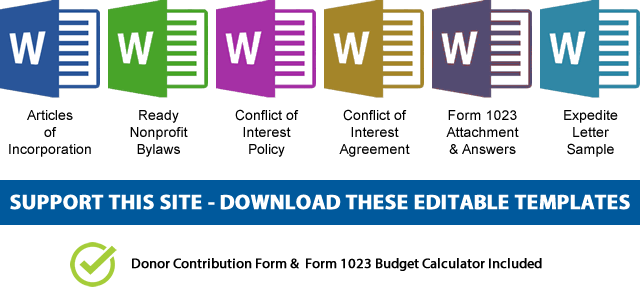 Form 1023, the application for recognition of exemption under Section 501(c)(3) of the Internal Revenue Code, asks about successor organizations to ensure that the newly formed nonprofit isn’t a continuation of a prior organization that engaged in activities that would disqualify it from tax-exempt status. Here’s a detailed breakdown of why this information is crucial:
Form 1023, the application for recognition of exemption under Section 501(c)(3) of the Internal Revenue Code, asks about successor organizations to ensure that the newly formed nonprofit isn’t a continuation of a prior organization that engaged in activities that would disqualify it from tax-exempt status. Here’s a detailed breakdown of why this information is crucial:
Definition: A successor organization is a new entity that takes over or continues the operations, assets, or functions of a prior entity, which can be either for-profit or non-profit. The new organization might have been formed as a result of a merger, consolidation, conversion, reorganization, or transfer of assets from the predecessor.
Purpose of Inquiry: The IRS needs to assess whether the new organization is simply a continuation of a prior entity, especially if that entity had activities or practices that would affect its eligibility for tax-exempt status. If you ar a successor another organization, you have to complete the schedule G of the form 1023.
Preventing Private Benefit or Inurement
Private Benefit and Inurement: For an organization to qualify for tax-exempt status under Section 501(c)(3), it must be organized and operated exclusively for exempt purposes, such as charitable, educational, or religious activities. It cannot serve private interests, such as the interests of the organization’s founders, shareholders, or other private individuals, beyond an incidental scope.
IRS Scrutiny: By asking about successor organizations, the IRS aims to ensure that no unfair private benefit or inurement occurred during the transition from the predecessor to the successor organization. The IRS is concerned that the transfer of assets or other actions might improperly benefit private individuals or parties, which would be contrary to the requirements for 501(c)(3) status.
Continuing Relationships and Control
Assessment of Relationships: The IRS examines whether there is a continuing relationship between the new organization and any individuals or entities associated with the predecessor. This includes looking into whether individuals from the predecessor organization hold significant roles in the new organization, which could suggest that the new entity is not truly independent.
Control Concerns: If key individuals who controlled the predecessor organization continue to control the successor, the IRS might be concerned about the potential for the organization to be used for private gain.
Evaluation of Asset Transfers
Reviewing Transfers of Assets: Schedule G requires detailed information about the transfer of assets from the predecessor to the successor organization. This helps the IRS evaluate whether these transfers were made in a fair and reasonable manner, aligned with the organization’s exempt purposes, or if they were done to improperly benefit certain individuals.
Ensuring Compliance: The information provided helps the IRS ensure compliance with regulations, preventing the misuse of tax-exempt status.
Ensuring Proper Charitable Intent and Activities
Intent and Continuity: The IRS checks whether the successor organization has the proper charitable intent and is set up to conduct activities that align with 501(c)(3) requirements. This ensures that the new organization is not just a re-branded or restructured version of a prior entity that had improper or disqualifying activities.
Activities and Operations: The IRS assesses if the successor organization intends to continue activities that were not in compliance with tax-exemption rules, helping ensure that only genuinely charitable organizations receive tax-exempt status.
Potential Risks and Abuses
Preventing Abuses: Form 1023’s inquiry about successor organizations helps prevent potential abuses, such as the use of a new entity to sidestep previous non-compliance or legal issues of the predecessor, effectively ensuring that organizations applying for 501(c)(3) status meet all necessary qualifications without carrying over any disqualifying baggage from a prior entity.
Protecting the Public Interest: By scrutinizing successor organizations, the IRS aims to protect public interest and maintain the integrity of the tax-exempt sector, ensuring that it operates for the public good rather than for private benefits.
Conclusion:
Overall, the IRS uses the information on successor organizations to make sure the new nonprofit is eligible for tax-exempt status and is not being used to continue improper activities or to benefit private interests inappropriately.
 NOTE: If you’d like to receive the following organizing documents:
NOTE: If you’d like to receive the following organizing documents:- Nonprofit Articles of Incorporation,
- Nonprofit Bylaws,
- Nonprofit Conflict of Interest Policy,
- Conflict of Interest Policy Acknowledgment,
- Form 1023 Attachment with all the answers,
- Form 1023 Expedite Letter template,
- and Donor Contribution Form
in Microsoft Word Document format, please consider making a donation and you’ll get to download them immediately. Not only they're worth well over $1000 in value, they will save you weeks of copy pasting and formatting as they are ready to go templates which only need changing names and addresses.

